




People Stuck in the Elevator – It was storming pretty bad outside the hotel my wife and I were at. All day long red flag warnings were out on the beach, so we decided to stay at the hotel for supper. We were strolling towards the elevator as winds howled outside and I said, “You know, I’ve never been stuck in an elevator.” with a laugh. I pushed the button and she said, “Well you just jinxed us.”

Both of us chuckled a bit and then we heard the inviting and all too familiar “ding” as the doors opened and we stepped onboard. The doors swiftly closed behind us but then the lights flickered and we heard an unexpected clunk.
Obviously the power had been interrupted and as a result the elevators in the entire hotel came to a screeching halt. Not only that, but I am sure all sorts of services were interrupted throughout the property. As we stood there we both knew better than to panic, so we waited.
That episode got me to thinking, if I were in charge of the building what should be done? I write a lot about elevators, but I rarely write on what the building owner or property manager should do when the elevator thuds to a halt. Not that this happens often.
Elevators get stuck rarely in the United States and injuries are even rarer. Especially considering that elevators move nearly the entire world’s population or 10 billion passengers a week. There is the occasional power outage or mechanical problem, but statistically only 1 elevator ride in 12 million or so results is some kind of issue and when it does happen it is extremely minor in nature.
But, my mind could not help thinking about when you are in charge and people are getting stuck in the elevator. What should be done? So, I came up with a list of steps if it ever happens to you. Feel free to borrow or print any of this list and keep it for a reference or reminder. Just remember the most important thing is to make sure the passengers stay safe and you do what you can to get the elevator moving as quickly as possible.
One last thing, everyone on staff should know if you are the auto-dialed, priority call for the elevator car. Sometimes the emergency phones are programmed to contact the non-emergency police or fire department in the local jurisdiction. They can also be programmed to contact your elevator service company directly. No matter who is called automatically, it still does not relieve you of your obligations to the passengers. So find out what floor and open a dialog. It shows you care. Most importantly don’t let people just stand there wondering. If you do they will be thinking more of escape than waiting which is always a danger.
Fortunately for my wife and I the emergency was relatively brief unlike Nicolas White. He spent 41 hours trapped in an elevator. When the power came back on in our case, the elevator system was reset and we zoomed down to the lobby without a further care in the world. We enjoyed a great gourmet meal and had several fun conversations about getting stuck…
But we did take the stairs back to our room.
Sometimes our blog posts are not all about selling elevators, but issues like people getting stuck in the elevator. They are often about general information you might find useful. So, feel free to comment below, ask any elevator questions you would like or follow future blog posts by signing up. However, if you do have a need for an elevator and want to know a general budget number, just click below for a Fast Track number. Also click to take a virtual tour of our facility. You can see for yourself what it takes to produce the best commercial quality elevator that is set in place fully installed in less than four hours. In any case we love hearing from you!




We Understand Elevators for You – Elevators are a niche within a niche. Or a subsector of construction that no one really understands and maybe they shouldn’t. Think about it, in the US there are around 10,000 new commercial elevators installed each year.
Yet the construction industry as a whole is huge in comparison. It is more than 4% of the national GDP, and there was $1.823 trillion dollars in total construction in 2023. Lastly there are roughly 8 million employees in the construction industry. Yet only about 108,000 are in the elevator industry. That’s less than 1.5%! Elevator folks are a small exclusive club and they know it.
The upshot is that a vast majority of construction employees, architects and building owners know precious little about elevators because they don’t deal with them very often. So, honestly there is little reason for them to understand them. Most construction professionals rarely deal with elevators as they are, in context of the entire construction industry, rarely installed.
So when you have a project that must have or probably should have an elevator what are you to do?
Over the past decade or so I have come to a profound conclusion. The general construction industry, from architects to the people that swing hammers for a living, hate the elevator industry. This is due to a lack of trust and a bit of arrogance in the elevator industry. And hate is not too strong a word. We did a construction industry-wide poll and it revealed exactly that. There has a been a break in trust. This break in trust is especially pronounced in dealing with the big elevator companies. They tend to be in the habit of hiding vital information and realities of the trade from their customers.


“… a new way needs to be fashioned to revive the elevator industry and meet your needs.”
This lack of transparency has repercussions. Although you can download drawings online and talk to a salesperson (when you can get a hold of them) there seems to be little desire on the part of big elevator companies to get into the vital details of your project.
They want you to throw up a hoistway and then wait for them to complete the work when they want to. This process was fine for the 1900’s, but it’s infuriating today. A revolution was more than needed in the vertical transportation industry and alternatives were developed. These alternatives maybe a better fit for your project, but how do we mend fences and overcome the trust issue? To take advantage of possible alternatives like modular elevators, a new way needs to be fashioned to revive the elevator industry and meet the needs of the customer.
Trust must be rebuilt.
To build back trust we felt a completely different approach was needed that broke with the old pattern of the elevator industry. We have determined that open, clear, responsive, and honest information about your specific project is best. Through this approach we will rebuild trust and develop relationships that will better improve the relationships that seem to have been lost.
It begins with the premise that we understand elevators. Rest assured we do. We have been in the modular elevator business for over two decades with decades more experience prior to that in vertical transportation. But more importantly, we understand elevators for you. We know you do not have the time nor inclination to know all you need to know about elevators. We do, and our approach of full transparency throughout the entire process will let you see the difference. It will also build back the trust in the elevator industry. That trust has been lost over the years by dominance by an old out of dated philosophy and processes. But we at Modular Elevator Manufacturing are claiming it back through communication.
It is our goal as a company to revolutionize the elevator business. But this can only be accomplished with your help. You may leap to the conclusion this means you have to buy our product… we would love that. But that is not our goal. Our goal is to have open and transparent conversations about your project. So we want you to bring the hard questions. Ask us about how the unit fits in your plans, the engineering or even whether you need an elevator at all.
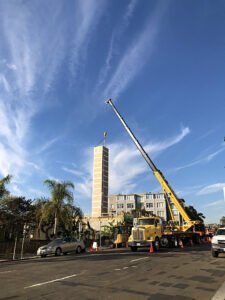

Those discussions will lead to a new perspective on the mysteries of the elevator industry and demystify it so you can make better decisions for your your specific project or projects.
That reformation of the elevator industry may lead to increased sales… or it may not. But we feel with more trust in the elevator industry it will improve our odds. So, if you have a project coming up and a low to mid-rise elevator is in the plans, but you need a discussion please contact us. Whether you think a modular elevator is the solution of not, we will discuss your project to help you. A great place to start and for simple numbers to compare costs, click on the button below for a FAST TRACK QUOTE. That will being the dialog.
Also, part of our effort to be transparent includes a live virtual tour of our manufacturing facility. Click that button to sign up.


Hospitality Needs the Best Lead Time – Usually, I try to begin a post with a soft approach. It pulls the reader in and makes for a better read. But there is no soft-peddling or easing into this one. Plainly put the MEM Elevator System has the best elevator lead time in the construction industry today. It really is that simple. Once all the preliminary work is complete we can deliver a fully installed, ready to start up, commercial quality elevator in less than 6 months. Crunching that lead time is exactly what the hospitality industry needs (See our latest project at a Disney Resort).
But beyond delivering a fully installed elevator when you need it, when it comes to hotels all your specific requirements can be addressed with the MEM Elevator System. Ultimately, for low and mid-rise projects there is no better option that has the reliability and flexibility you need. This includes all building types including modular, storage containers, stick-built, reinforced concrete or any other type of construction.
We can produce elevator cabs to any specs you wish and glass elevators are easy, for us. The units can be for new construction or retrofit projects. They can be on the exterior of the building or on the interior. Placement doesn’t matter. MEM can provide exactly what you need.
With our process you get your elevator when you need it. A fully-installed high-quality commercial elevator can be placed on your site in less than four hours.






It is a real simple process. We know precisely how long the manufacturing process takes from start to finish. You tell us when you would like the unit or units delivered and we back the start of manufacturing to meet your schedule. That easy.
You keep us updated regarding any changes so there are no surprises. When the start date rolls around we manufacture the hoistway and wrap it in the appropriate amount of drywall per code. Then the elevator rails and entrances are installed. Simultaneously, the cab is being built to your specification. All the wiring is being completed. Then the cab is inserted, final prep is done and your elevator is delivered and ready for start up and inspection.
It is more than time to end all the headaches you face with the elevator portion of your project. There is no reason it has to be so complex and filled with so many problems and delays. We have started a revolution with our design and process so join the revolution.
Click the button for a Fast Track or schedule a LIVE VIRTUAL TOUR.


We Are More Than Modular – With the big win at the World of Modular conference where we won two trophies, it is easy to think our MEM Elevator System is only for modular construction projects. Yes, the first place Award of Distinction was for a park concession area that was built totally with shipping containers. And the runner up Award of Distinction was for a traditional modular build. But don’t let that fool you into thinking that Modular Elevator Manufacturing creates its award winning elevator solutions for just the modular industry.


Far from it. All sectors of the construction industry can benefit from the easiest, fastest and most cost-effective commercial quality elevator solution. It is for everyone. Our projects can include retrofit elevator installation to new construction.
One of our recent retrofit projects was placed on the exterior of a production facility. It went up so quick that the construction elevator was taken down with the benefit of the savings going to the owners. The elevator could have just as easily been placed in the interior of the build by cutting a hole in the roof and lowered into place.
Another application that is not modular is for parking garages. The MEM Elevator System can be placed along side the structure for a fast and easy way to meet code and provide vertical transportation.
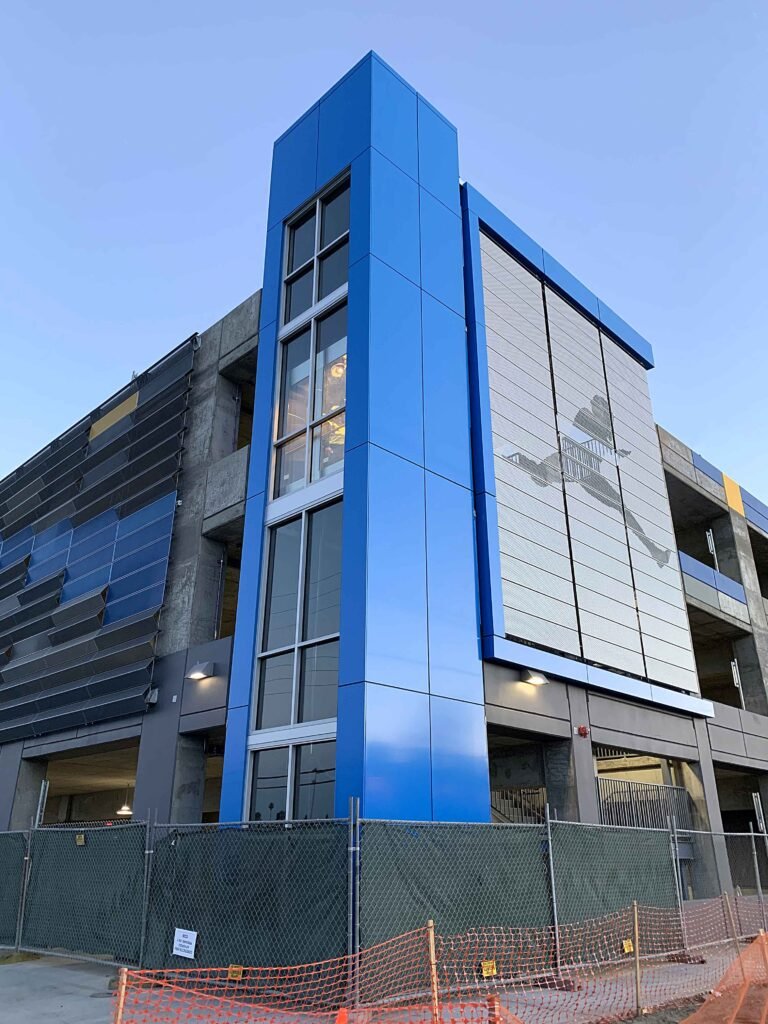

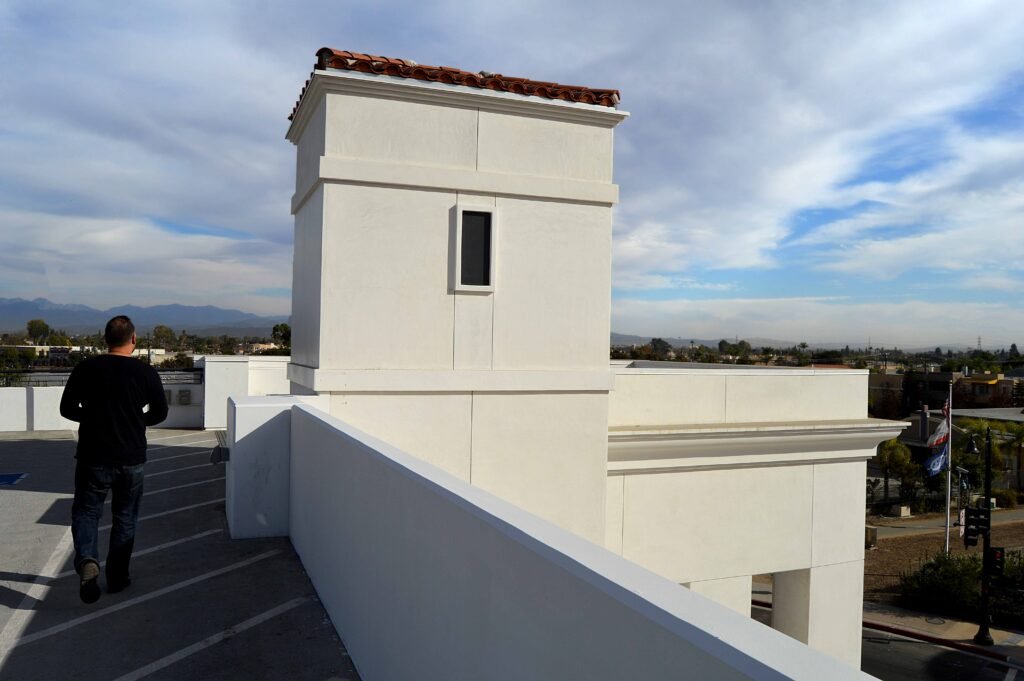



Traditional construction methods are employed in a wide range of vertical markets and we can help meet those needs as well. Hospitality, commercial spaces, schools, and medical facilities all have used our solution with great success. You can see some of them below and here in our gallery.
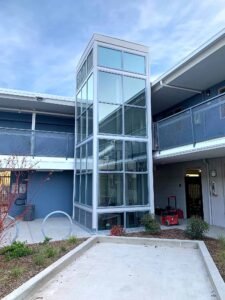







The reason for its popularity and that it has largely found market acceptance is the MEM Elevator System has significant benefits over traditional elevator installation:
So the bottom line is that we are grateful for the recognition. It is confirmed, we are the leaders of the modular elevator revolution and our recent awards prove as much. However, what means more to us is that we can provide a much needed solution to vertical transportation woes.
If you want to join us in this better way, regardless of your project, contact us. We can provide a solution for all low and mid-rise applications. To find out more click the button below and schedule a live virtual tour of our facility. If you have a project in mind, start the process by requesting a Fast Track Quote.




Modular Elevator Footprint – Often times when comparing the revolutionary MEM Modular Elevator System to traditional elevators the modular elevator footprint size comes up as an obstacle. This is especially true regarding interior placement. In this blog post we compare how much space is taken up in an apples to apples comparison.
There is a lot of confusion over exactly how much space the hoistway will ultimately require. To clear this up we went to our valued California partner TLShield for answers.
Senior Sales Executive, Craig Braund is a leader in the elevator and construction industry. He is known for using clear communication to solve problems for a variety of builders and architects. He took the time to examine the statement and question:
A modular elevator footprint takes up more space than a conventional elevator. Fact or fiction?
Coming to a conclusion on this question can be important. Especially to builders, architects and contractors when they consider switching to a modular elevator in the interior of a building. They like the fact that the modular elevator is off the critical path. It also saves time on the job and ultimately is a cost savings. However, switching from a conventional elevator, already designed in the project, to a modular elevator can be a hard decision to make. This is especially true when they are presented with the inside pit dimensions. This is because they believe they will have to totally redesign the building space for the elevator by a foot on each side to fit the MEM Modular Elevator System in.
But below, you can see that isn’t the case.


A typical 3500G (Gurney) conventional elevator has an inside pit / hoistway dimension of 6’-11” x 8’-6”
The MEM Modular Elevator System HW-2 3500G (Gurney) has an inside pit dimension of 7’-10 1/4” x 9’-6″
But is the required building space really larger? Here’s where it gets interesting.
The hoistway walls on a conventional elevator are typically between 7” and 8”. So the actual overall outside dimension (using 7” walls) of the elevator and hoistway is 8’-1” x 9’-8″.
A HW-2 3500G MEM Elevator with a 2-hr fire rating has a overall outside dimension (outside steel plus 2 1/2”) of the elevator and hoistway of 7’-9” x 9’-4 3/4″.
So in reality, an interior MEM Elevator actually takes up less building space. When the hoistway walls are utilized as building walls as done typically. The good news? No major redesign is necessary at all.
Therefore the answer to the “fact or fiction” question is… fiction. The modular elevator footprint is actually smaller.


If you have been holding back on considering the MEM Modular Elevator System because you thought interior placement was a problem with the modular elevator footprint size, we hope you reconsider.
As you can see we are a great option. We can be your solution to taking the elevator off the critical path. Additionally we can provide you with time and cost savings. To explore more you can click the button below. Sign up for a LIVE VIRTUAL TOUR of our facility where we show you how we produce this revolutionary product. If you have a current project and would like to explore more with pricing click the Fast Track Quote button.
We would be glad to have a conversation and help you with a solution to your vertical transportation needs.



We conducted and continue to poll the construction industry regarding how well the elevator industry performs in five specific areas. The elevator poll results are beginning to paint a picture! The participants include architects, project managers, engineers, building owners, investors and everyone in between. We will be using these numbers to establish a new normal and revolutionize multi-story construction processes. As an elevator manufacturer we know there are shortcomings in our industry and this is an important first step in making changes and being a part of an elevator revolution.
Your input is valuable so let your voice be heard. You can still take the poll and we will update the results.
We have already and will continue to conduct open forums based on various construction vertical markets to get additional input. This will greatly help in fomenting the change we all need to see. You will see a picture beginning to emerge through our polling and our first discussion with the parking structure industry leaders.
With that said, here are the results of each question in the poll:
The ranking is on a one through five scale with 1 being horrible and 5 being great. This result was honestly and unfortunately not surprising. It has long been asserted that the elevator industry is not being responsive to the needs of the construction industry.
During the forum, a number of examples were put forward to explain the low numbers by the poll participants.
We were holding the forum to only an hour out of respect for time that participants were willing to expend. However, this question alone could have filled the entire hour and more.
The upshot is that the elevator industry needs to quit kidding itself. There is not only the perception of a problem deeply engrained in the industry, there is one. Other trades, owners, design/build firms, project managers and just about everyone in the construction industry feels pain points regarding the elevator. They also have real world examples of areas that need some or significant improvement.
The elevator poll results show delays. But, all construction projects have delays. And, as we know delays cost money. It pushes back occupancy, interferes with other trades necessitating call backs and rescheduling and is a headache to manage. But is the elevator industry any worse than the next subcontractor?
From the elevator poll results it appears that the elevator usually creates major delays or always causes some delays. The forum respondents backed this up with the following thoughts:
It is starting to feel like a recurring theme and we are only at Question 2. Quality communication of timelines, expectations and scheduling is a big problem. Also, the perception is that there is little care about the project overall. This seems to be consistent in the polling and the forum discussion.
As you can see the responses were varied and often based upon the role that each respondent has in the project. One of the issues the elevator industry must face is the variety of customers they must provide service to. Customers meaning anyone that they need to communicate with and have a vested interest in the project.
For instance the needs of the architect and engineer regarding the structure are very important, as is traffic flow and design. But those issues may not even be on the building owner’s radar. However, the timeline of the elevator is much more important to them and the project manager.
Overall, the forum revealed that machine roomless elevators are here to stay and have market acceptance even in some jurisdictions that were dragging their feet. This is despite the lack of need regarding speed of travel or increased costs. The space savings generally was not an issue with the parking lot sector although others, by the poll numbers, felt it was important.
Additional comments included that adding significant time to the estimated job completion due to the elevator installation was crucial. Also, costs were not generally as important as on time completion and a high-quality overall product.
This question is the one that was predictable and not a surprise in the least. It was acknowledged in the forum that they often go with the same manufacturer over several projects. However, they do not hesitate to rotate through the options.
In any case, the decision is made fairly early in the process. However, over time they have learned to build the hoistway, regarding traditional elevators, large enough to accommodate options from a variety of elevator companies.
In the forum it was surprising how often last minute changes had occurred. Last minute increases in the pricing or lack of availability of timely installation were included as the reasons.
The most common difficulty and the most glaring issue in the forum regarding the elevator is both the start up and scheduling of the inspection. That is followed by costs and overruns created by continual change orders.
There was also an acknowledgement that lack of quality communication continues to be a recurring theme. Again the timing of the state inspection was also an important topic. It seems that there are consistent breakdowns in communication. Often the contact person with the elevator company changes with turn over and then there is no notice given to the construction company. This leads to emails or phone messages going to previous employees and there being no response. As a result, the project manager has sent notice to the elevator company, but no one is there to respond.
It seems the construction company cannot keep track of the players and when they do, they are not viewed as team players.
It is still a bit early to know all the right conclusions, however even early on we can start to paint a picture. From the forum and the poll it seems communication is lacking. But, that does not mean just communication in general. Communication needs to be quality. That means awareness of the elevator processes and motivations from the selling the unit to the inspection. A step-by-step organized guide may need to be compiled with easy to follow guides to installation and start up. Not one just for modular elevators, but one for all elevators. Clear concise information is needed. That would help solve many problems.
There also needs to be a real examination of ways to increase efficiency in the process. Moving some of the sticking points closer tot he front end instead of the backend. There are better ways for an industry that has largely stayed the same since the 1800’s.
Lastly, there needs to be honesty in dealing with and commitment to our customers. Not just the folks that are paying for the elevator, but everyone throughout the process from sales to the final user. This is a significant shortfall of the elevator industry.
We still need more data from the elevator poll results to make a better assessment and improvements so please take a couple of minutes and let us know what you think about the elevator industry. Also, we want a free flow of communication, even if it is hard to say or might offend. If you look at this data a different way or see potential solutions please let us know. We want to lead an elevator revolution, but it won’t be possible without you.


Elevator Forum Produces Results. For those of you who are new to Modular Elevator Manufacturing (MEM) we are an elevator manufacturer. But not your typical company. We are trying to foster a revolution in an old industry that has not changed in 150 years. To help in that effort, we have sponsored a poll about the elevator industry so people in the construction industry can let us know the challenges they face when an elevator is part of their project. You can still participate by clicking the button below. It is just five short questions.


We then take those results and further define the issues you face by holding an open forum and clarifying the issues. The next step is then to make an honest effort to reform an industry in desperate need for a revolution. We will make changes to how we do things but also publish important information that you can use across the industry regardless of who you choose for your vertical transportation needs.
One vertical industry at a time we will be offering these opportunities for change. Our first was a success with the parking garage industry. The results of the forum were not surprising, but interesting to say the least.
First, when we said we were having a free and open discussion, we expected people to strain to participate with a largely one-sided conversation. Nothing could be further from the truth. We went through each of the poll questions and listened. To our surprise there was a lot to hear.
For instance when we asked specifically about time of completion and the elevator’s impact we were shocked at the candor.
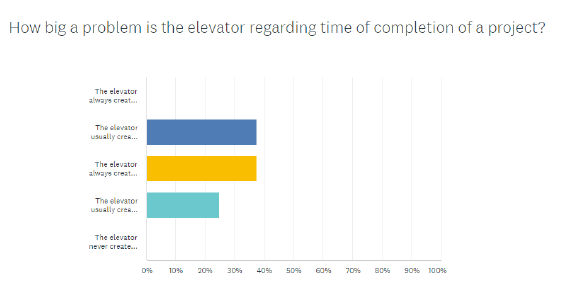

The elevator installation “Usually creates major delays” to “Usually creates some delays”.
This is a major pain-point for the builder and the elevator industry.
Discussing that single issue propelled a discussion that elevator manufacturers need to hear more about. It seems that the overriding thought from builders across the construction industry is that the elevator installer are actually looking for ways to leave the jobsite. That leaves timetables for completion unpredictable.
It turns out that elevator mechanics once they get on the site are often looking for ways to get back off the site as fast as they can. We know many of the major reasons that occurs. An emergency somewhere else is a good reason if true. But they become more difficult to swallow after that and seem more like excuses. Examples such as it is too hot or too cold in the hoistway or shaft has led to a running joke in the elevator business (especially in colder climates), the technician watches the thermometer more than the time clock. If it drops below 55 degrees, time to go home.
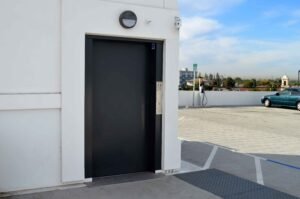

The elevator company will sometimes come clean with an acknowledgement they double booked or they are trying to finish up another job somewhere else.
You will hear that they don’t have all the parts they need.
But a new reason to abandon the jobsite from wayward elevator mechanics came to light as well. I had never heard this one before. It is too dusty in the shaft. That was a new one on me.
Overall, because of a lack of trust in the industry as a whole or lack of trust in an individual company, builders are just not buying it.
This discussion led to the most damning indictment of the whole conversation. The elevator company is just looking for reasons to leave the site and they are not team players.
“The elevator industry generally takes the opinion, too bad.”
The feeling of the group in the forum was that everyone in the construction trade from plumbers to electricians have failings; they double book, they fall short in deadlines and have cost overruns. But after its all said and done they do their best to finish the job on time as promised. The other trades think through the problem or through the difficulty and work with the rest of the team to pull it all together.
That may or may not be an accurate picture, but it is the perception. The elevator industry generally takes the opinion, too bad. That has to stop.
I always hate using football as an analogy, but it fits here. When I was playing I could miss a tackle or a block, miss a read or blow an assignment, but if I did everything I could for the team to be a success it was forgotten (usually after 100 down and ups). It is true that I might have to ride the pine, for a game or miss a first-half, but all was forgiven. I was welcomed back. No one was never endanger of being kick off the team for a mistake.
The elevator industry has a habit of acting like they can do what they want, when they want and there is nothing that can be done. Mistakes are common and often and little effort is made to make them right. If this keeps up they are going to find themselves kicked of the team.
But the time for change is coming. A revolution is starting. It may begin small, but we are hoping to detect the pain-point through the polling and forums and then lead to find solutions. It is going to take honest communication throughout the construction industry from architects to elevator maintenance companies, but change is on the way.


And this leads to the final point where we usually turn all this information into a pitch for our revolutionary product. Yes, you can click the links below for more information if you want, but that is not the purpose.
If you want to be a part of the elevator revolution and improve the way the elevator is placed, designed, started up and maintained we invite you to be a part of the solution. You can start by taking the simple five question poll. It will only take a couple minutes. You can then contact us and ask to be included on future phone conferences. We will discuss the poll in its entirety and you can have a hand in influencing the future of the elevator industry.
If you want more information about the MEM Elevator System just click the link below.



New York elevator set over the holidays. While most businesses slow down between the last couple weeks of December and January 1, MEM’s schedule picks up. That slow period for most (especially schools) is the perfect time to install a complete elevator in less than four hours with the MEM system. Because they install so quickly there are minimal interruptions that you will find with traditional elevators.




A great example is a project we just set in New York. The Ateres Girls School was a perfect fit for us. The MEM system for the school is an above-ground hydraulic unit with a 25000lb. capacity and 16′ travel distance. It went in easily and smoothly.
That not only speaks to the product and our production team, but also the professionals at Nadler Modular that led the project. They made sure everything was ready and therefore the project went off without a hitch.
A modular project is not a requirement. Even with the elevator placed on the exterior of the building, that is not a always necessary for our elevators. MEM elevators can be placed in any type of construction project. And be placed on the exterior or interior. If you are looking for a vertical transportation solution for any low or mid-rise application we have what you need.
To make MEM a part of your next project just click the link to find out more or get a FAST TRACK QUOTE.



People Stuck in the Elevator – It was storming pretty bad outside the hotel my wife and I were at. All day long red flag warnings were out on the beach, so we decided to stay at the hotel for supper. We were strolling towards the elevator as winds howled outside and I said, “You know, I’ve never been stuck in an elevator.” with a laugh. I pushed the button and she said, “Well you just jinxed us.”


Both of us chuckled a bit and then we heard the inviting and all too familiar “ding” as the doors opened and we stepped onboard. The doors swiftly closed behind us but then the lights flickered and we heard an unexpected clunk.
Obviously the power had been interrupted and as a result the elevators in the entire hotel came to a screeching halt. Not only that, but I am sure all sorts of services were interrupted throughout the property. As we stood there we both knew better than to panic, so we waited.
That episode got me to thinking, if I were in charge of the building what should be done? I write a lot about elevators, but I rarely write on what the building owner or property manager should do when the elevator thuds to a halt. Not that this happens often.
Elevators get stuck rarely in the United States and injuries are even rarer. Especially considering that elevators move nearly the entire world’s population or 10 billion passengers a week. There is the occasional power outage or mechanical problem, but statistically only 1 elevator ride in 12 million or so results is some kind of issue and when it does happen it is extremely minor in nature.
But, my mind could not help thinking about when you are in charge and people are getting stuck in the elevator. What should be done? So, I came up with a list of steps if it ever happens to you. Feel free to borrow or print any of this list and keep it for a reference or reminder. Just remember the most important thing is to make sure the passengers stay safe and you do what you can to get the elevator moving as quickly as possible.
One last thing, everyone on staff should know if you are the auto-dialed, priority call for the elevator car. Sometimes the emergency phones are programmed to contact the non-emergency police or fire department in the local jurisdiction. They can also be programmed to contact your elevator service company directly. No matter who is called automatically, it still does not relieve you of your obligations to the passengers. So find out what floor and open a dialog. It shows you care. Most importantly don’t let people just stand there wondering. If you do they will be thinking more of escape than waiting which is always a danger.
Fortunately for my wife and I the emergency was relatively brief unlike Nicolas White. He spent 41 hours trapped in an elevator. When the power came back on in our case, the elevator system was reset and we zoomed down to the lobby without a further care in the world. We enjoyed a great gourmet meal and had several fun conversation about getting stuck…
But we did take the stairs back to our room.
Sometimes our blog posts are not all about selling elevators, but issues like people getting stuck in the elevator. They are often about general information you might find useful. So, feel free to comment below, ask any elevator questions you would like or follow future blog posts by signing up. However, if you do have a need for an elevator and want to know a general budget number, just click below for a Fast Track number. Also click to take a virtual tour of our facility. You can see for yourself what it takes to produce the best commercial quality elevator that is set in place fully installed in less than four hours. In any case we love hearing from you!


Elevator 101 is about the basics. See, being around elevators all the time can warp your perspective. You begin to think that everyone has a pretty high base knowledge of elevators and elevator lingo. We tend to forget that most people’s knowledge of elevators in the construction industry is limited to, “They are a pain in the rear end”. So, every once in a while it is a good idea to review what the basic terms mean. Reviewing this info is especially needed if you are going to be chatting with people in the elevator business about a specific project.
Overall there is too much jargon. Like talking to a doctor or lawyer, elevator people sometimes skip over things that are basic to them, but may confuse folks not immersed in the field. The intricacies of brain surgery or the meaning of habeas corpus (I think its a city in Texas), can easily pass us by and so can terms regarding elevators. We hope this will help.
So here is a list of basic terms that you should review, or bookmark before you talk with an elevator consultant, elevator sales person or even an elevator mechanic.
That above list is a good staring point. However, if you ever have a question feel free to call us whether you have the intention of buying a modular elevator or not. As geeky and weird as it sounds, we like talking about elevators.
Below is a handy diagram, a chart based on travel distance and some links.
Additionally if you want to know more about the modes of conveyance. Just click here for a full explanation. You can also click here for information on hydraulic units. You can also look at the dozens of articles we have available on our blog.
If you would like to know a bit about pricing for a project just click the button below to get a Fast Track Quote. But if you really want to know more about elevators, schedule a live, virtual tour of our factory. It is open to anyone with questions about elevators. We love showing off!
Never miss a blog post again. Sign up for our monthly email newletter. Get important information about elevators, the modular industry and more.
